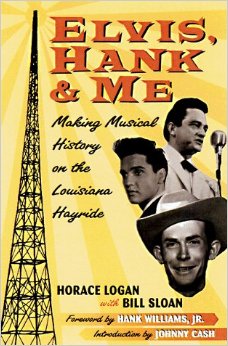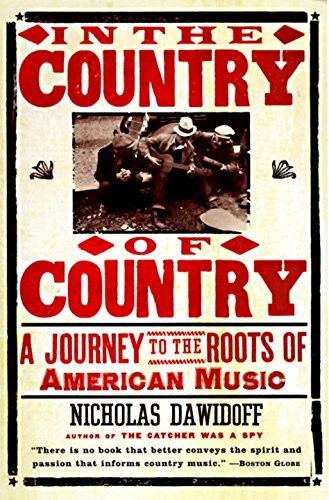In “The Death of Country Music,” country-punks The Waco, Brothers sing, “we spill some blood on the ashes/ Of the bones of the Jones and the Cashes.” The song laments the replacement of George Jones, Johnny Cash and similar stars of country music with “hat acts,” men and women indistinguishable from fraternity brothers and sorority sisters if not for their, cowboy hats. The current, Bransonized country is dismissed as faceless,though it’s worth remembering that classic country was probably equally faceless in its moment; time helps us forget the copycats and minor acts that tried to cash in on popular sounds years ago. Still, the older face of country was more interesting. The menacingly handsome Cash has been replaced by jocklike Tim McGraw, and the love-scarred Tammy Wynette has been replaced with the aerobicized beauty of Mindy McCready. Hard-living, passionate artists have been replaced by suburban barbecue neighbors in modern listeners’ hearts and certainly on the radio, but a few recent books bring the days of classic country to life.
 Hank, Elvis and Me: Making Musical History on the Louisiana Hayride is obviously a real country book because, well, it’s written by a guy named “Hoss.” Horace “Hoss” Logan was the producer of the Louisiana Hayride, a live country radio broadcast out of Shreveport from 1948 to 1958, and as the book’s title implies, part of the Louisiana Hayride’s fame comes from its place in the lives of Hank Williams and Elvis Presley.
Hank, Elvis and Me: Making Musical History on the Louisiana Hayride is obviously a real country book because, well, it’s written by a guy named “Hoss.” Horace “Hoss” Logan was the producer of the Louisiana Hayride, a live country radio broadcast out of Shreveport from 1948 to 1958, and as the book’s title implies, part of the Louisiana Hayride’s fame comes from its place in the lives of Hank Williams and Elvis Presley.
Williams, whose drinking problem was already legendary, enjoyed bouts of sobriety in Shreveport in 1948, during which time he also recorded “Lovesick Blues,” the song that launched his career. In the winter of 1954, Elvis had only recorded “That’s Alright Mama” and “Blue Moon of Kentucky,” so Logan was taking a chance when he booked the then-unknown Presley on the Hayride. The screaming, riotous response Elvis received introduced the national listening audience tothe mania that surrounded him.
Logan refers to The Louisiana Hayride as “the cradle to the stars” because it helped launch the careers of Williams, Presley, Johnny Cash, Jim Reeves, Kitty Wells and countless others. Like Nashville’s Grand Ole Opry, it was broadcast nationwide, and not surprisingly, there was a rivalry between the two shows. Logan, in prose typical of the book’s directness, describes the producers and bookers of the Opry as “greedy, arrogant, mean-spirited SOBs,” partially because its inflexibility – no electric instruments – and because the two were in competition, with the Opry constantly raiding the Hayride’s talent roster. Regular appearances on the Hayride helped establish stars, and in the case of Hank Williams, demonstrate that he could stay sober long enough to be relied upon, at which point the Opry would move in and sign the artists to exclusive deals.
As an account of the heyday of country, Elvis, Hank, and Me can’t be beat, but what makes the book is Logan’s storytelling. Reading it is like listening to your grandpa tell a story: it’s direct, often gentlemanly, a little ornery, and probably dotted with a few “stretchers”, but they only add to the charm. Logan, for instance, seems to have always recognized skunks when he saw them, realizing that Hank Williams’ wife was going to be the death of him, and knowing right from the start Col. Tom Parker was “a blustering, overweight huckster,” even before Elvis signed with him. He may well have done both things, and he may be as central to the popularizing of country music as his story suggests, but even if he isn’t, reading Elvis, Hank, and Me is a good, uncomplicated, country experience, like chicken-fried steak with white gravy and buttery, mashed potatoes.
In the Country of Country: A Journey to the Roots of American Music, just out in paperback, is as direct as Elvis, Hank, and Me, but it is a more self-consciously “written” book. Nicholas Dawidoff brings an earnest clarity to his profiles of some of country’s most fascinating figures, and for anyone even casually interested in country and folk, it is essential reading. Dawidoff connects the music to the land; in a chapter on country gospel singers The Louvin Brothers, he traces their mysterious, sad spirituality to their native Sand Mountain, “a place where peopie took ardent refuge in the sacred or expressed their frustration in violence and debauchery. Sometimes they did both.” Whether Dawidoff’s accounts begin in Sand Mountain, Flint Hill, or Chet Atkins’ hometown of Luttrell, Tennessee, they are stories of lives and careers that bear little resemblance to their counterparts in other areas of popular music.
 In the Country of Country documents careers side-tracked for work in factories, childhoods spent picking cotton, and talents developed as defense mechanisms against loneliness and pain. These are not part of the typical rock ‘n’ roll or jazz story, but because America became an urban nation shortly before the turn of the century, we tend to see life as defined by what happens in cities. People may buy In the Country of Country for the stories of stars – George Jones drinking, Patsy Cline being “lusty and gleeful” – but the real value of the book is the way the stories remind readers just how different rural life can be.
In the Country of Country documents careers side-tracked for work in factories, childhoods spent picking cotton, and talents developed as defense mechanisms against loneliness and pain. These are not part of the typical rock ‘n’ roll or jazz story, but because America became an urban nation shortly before the turn of the century, we tend to see life as defined by what happens in cities. People may buy In the Country of Country for the stories of stars – George Jones drinking, Patsy Cline being “lusty and gleeful” – but the real value of the book is the way the stories remind readers just how different rural life can be.
Unfortunately, country music today is too often dismissed. The New Orleans Jazz and Heritage Festival, for instance, seems to have decided that it is not a “heritage” music, judging by the recent past.
Thankfully, alternative country bands like the Waco Brothers show that country isn’t the voice of’ inbreeds, hicks and yahoos; their Cowboy in Flames album draws listeners to the same conclusion these books do, that there is a spirit in this music and these stories that doesn’t deserve such shabby treatment.
Country at its best avoids irony – the most common modern defense mechanism – and has a purity that is as attractive as it is rare. To shut it out is to shut out one of the crucial American voices.
Finally, Nick Tosches’ Hellfire is once again on the market, and it is one of the music books that belongs on every bookshelf The book, originally published in 1982, is a biography of Jerry Lee Lewis, all of which either leads up to or descends from the year he both became: an international phenomenon and a pariah in the space of months.




